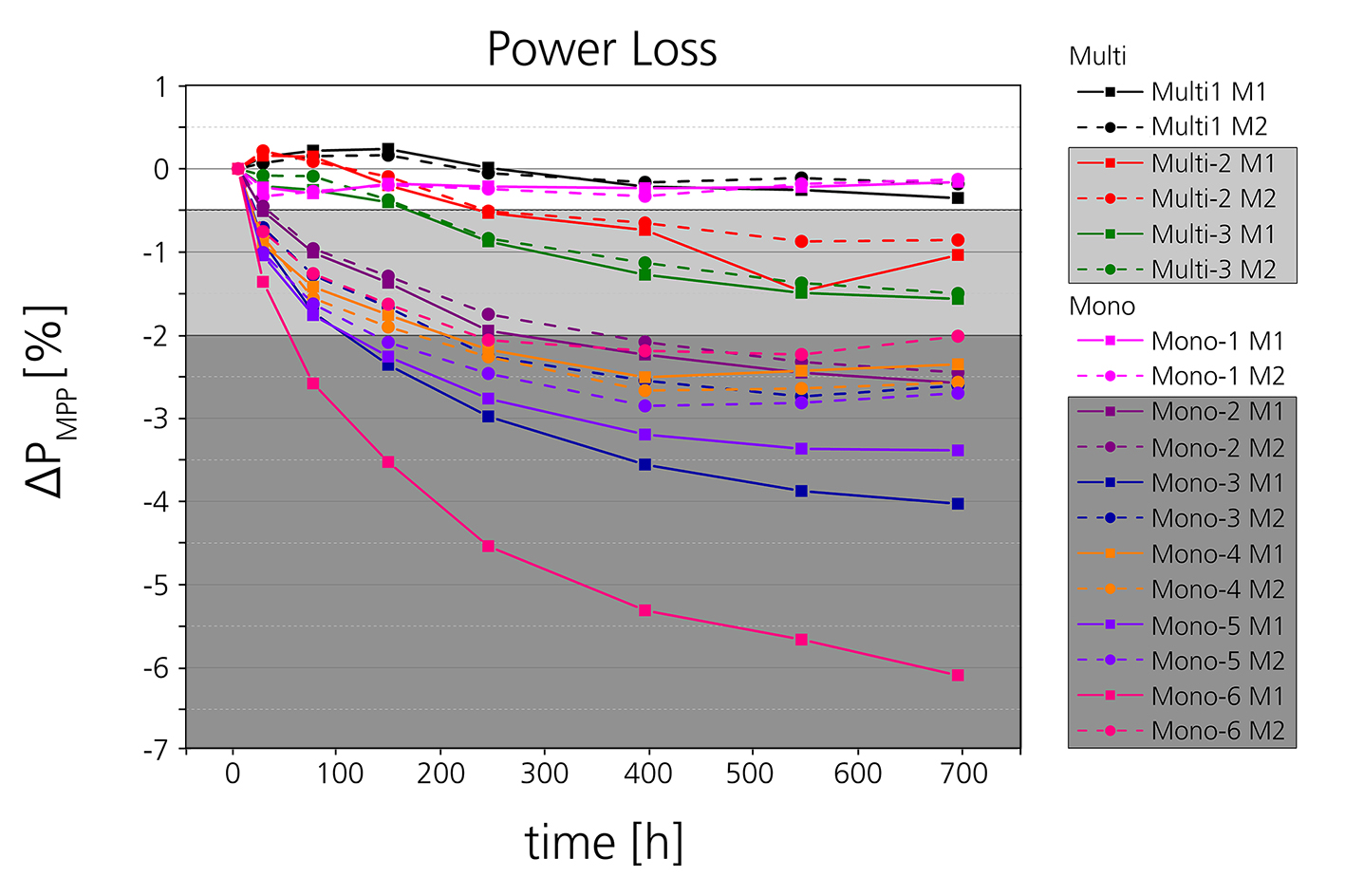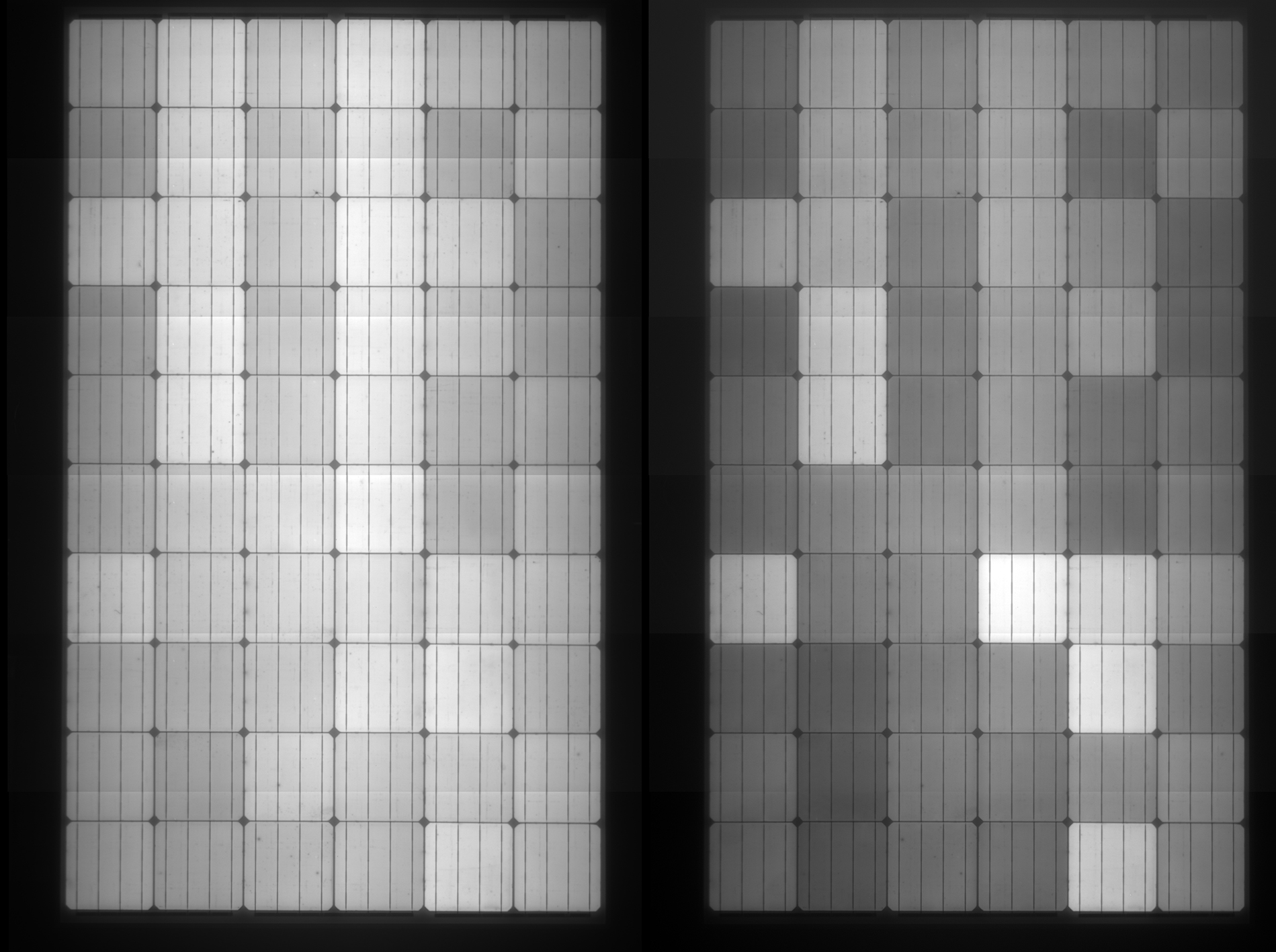At present, the transition from standard Al BSF to PERC cell technology is taking place in the photovoltaic industry due to higher efficiency potential. An increased market share of over 30 % is forecast in 2019. In the last years a new type of degradation due to light and elevated temperatures (short LeTID) that is especially affecting PERC technology was published with losses up to 10 % in multi-Si PERC modules [1]. At the Fraunhofer Center for Silicon Photovoltaics, this severe degradation of PERC solar cells has been subject to intensive research during the last few years. LeTID is originating in the cells and depends on several degradation parameters and the individual cell process. Both multi-Si and mono-Si PERC cells can be affected. The root cause is currently unknown and unrelated to previously observed LID-mechanisms.


The Fraunhofer Center for Silicon Photovoltaics CSP has benchmarked the LeTID susceptibility of commercial PERC solar modules. Nine module types with 2 modules per manufacturer of market leading companies were tested. As LID is a physical degradation process within the solar cells, the module test conditions have been defined on the basis of extensive cell tests. In particular, the test conditions have been chosen to distinguish between the well-known boron-oxygen-related LID and the PERC-specific LeTID. Regular power measurements under standard test conditions were performed in between the degradation cycles to evaluate power stabilization.
The LeTID benchmark of commercially available PERC modules shows a LeTID related power loss of up to 6 % (Fig. 1). A power loss of more than 3 % has been found for four manufacturers. Three manufacturers show average losses from 1 % to 2.5 %. Finally, two LeTID-stable modules were identified with power losses well below 1 %. Furthermore, the test has revealed that the spread in power loss can be quite significant even for PV modules of one single manufacturer. As consequence not all cells have the same susceptibility for LeTID which can also be concluded from the EL image, which shows an inhomogeneous degradation pattern (Fig. 2).
These findings clearly show the necessity of a standardized test scheme for the LeTID-sensitivity of PERC modules. Fraunhofer CSP operates a wide range of LID-test equipment and characterization tools given all PV manufactures the opportunity to get independent results on the LeTID sensitivity of their solar cells and modules.
At the PV Symposium in Bad Staffelstein from 19.-21.3.2019 updated results and a potential power/energy yield loss estimation due to LeTID susceptible modules were presented. The researchers of the Fraunhofer CSP, Matthias Pander, Bengt Jäckel, David Dassler and Matthias Ebert were awarded the prize for the second best poster presentation for their contribution "Prognosis of the potential power/yield loss due to LeTID susceptible modules".
"We were able to show that LeTID develops faster in warm climates because module temperatures are higher there. After a few years of operation, relevant losses of between 4 and 5 percent can already be seen there," Pander summarizes the results. "I am very pleased about the award for our team. It underlines the importance of quality control and the need for further research," says Pander.
References:
[1] F. Kersten et al., A new light induced volume degradation effect of mc-Si solar cells and modules, in Proc. 31th EUPVSEC, Hamburg, Germany, 2015, pp. 1830
 Fraunhofer Center for Silicon Photovoltaics CSP
Fraunhofer Center for Silicon Photovoltaics CSP